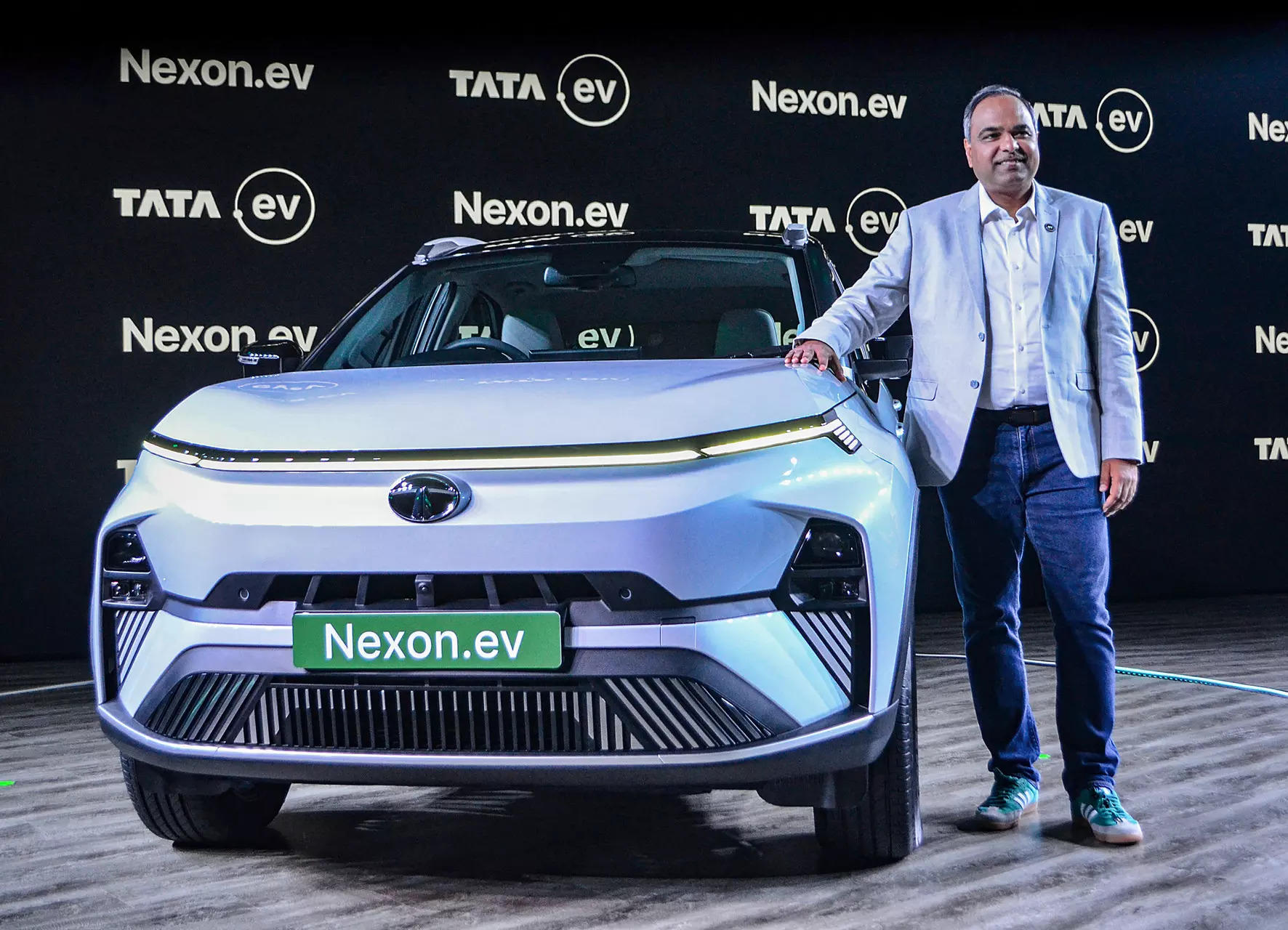
Q: How do you see that your contribution to the electric cars will give the momentum for the overall electric passenger segment? What volumes can grow in the next one year and what are the targets for Tata Motors?
First, our approach has been that every new product should create a new segment. It should give an opportunity for a new customer to embrace EV. And therefore, you would have seen the approach that first we came with a Nexon EV, because battery prices were at a level that we could give only a limited range in a certain segment where we could meet that boundary condition of an EV price, that is within 25% premium to an ICE equivalent.
But as the battery prices came down, increasing the range of Nexon was the first step that we took. After that, as the battery prices further came down, we launched the most affordable product, which was Tiago, of course, with a range, which was slightly lower.
But then we have come with the Punch EV, which is in between these two. So we are trying to offer choices to the customer in different body styles. Thus we have given a sedan, a hatchback, an SUV, and now another SUV, in the very popular subcompact category.
We are giving a different price point and different body styles for a smaller footprint car. We have given a 400-plus km range. Our effort is that every new launch should make a difference in expanding the volume of electric vehicles and not cannibalize the demand.
The effort will continue with the subsequent launches. That in the price continuum, starting from 8.5 lakh, going up to, say, 25 lakh plus, there are multiple options available to a customer.
Our contribution to the electric vehicle industry will be to give choices for different levels of accessibility to the customer, so that every pocket has an electric vehicle choice available to him/her. So that will be our contribution, and that is what should support our leadership in the market.
Q: You are close to selling 1 lakh EVs this financial year. What is the target of Tata Motors for next year?
No, this year we should be ending at between 70,000 and 80,000 EVs. We had taken an aspiration of 1 lakh this calendar year, but we could not reach that number because of several reasons. The charging infra did not expand at the pace which we had anticipated, the cities we had thought will adopt electric vehicle did not meet our expectations, policies in certain states did not continue the way we anticipated. All these factors contributed to not being able to hit that 1 lakh target.
But having said that, I think with the adoption and strength of our products, we remain the best sellers. And therefore, with the additional product that we have launched now and additional two products which will be coming in the latter part of this year, I think we should be definitely thinking of volumes beyond 1 lakh. So that would be the target.
Q: Can you point out the different segments, or the diverse profiles of EV customers?
Electric vehicle (EV), when first introduced, was a new technology and so there were a lot of early adopters. They were a very patient set of customers who wanted to experiment with a new technology. It is good for the environment. At the same time, there are very pragmatic customers who see the huge economic saving potential of EVs. Maintenance cost is very low. The various Kinds of applications in EVs are such that we had not even envisaged. It is a small footprint car.
The homemaker is able to do her set of work fully empowered with a car. Then you have school students also, who are using EVs, staying on the outskirts and they have to travel to the town.
There are a lot of doctors using EVs as they feel that they have a certain circuit and a long distance to cover during the day. It is silent, stress free, and good for the environment.
Smart businessmen who live in a big city, but have a factory somewhere on the outskirts, and have a very long daily commute, see that this car is comfortable and silent. You don’t get tired of driving EVs, and it also saves a lot of money.
So we have all these diverse segments of customers who are buying EVs.
Just from a city profiling perspective, we have seen a shift of demand from tier-1 cities to tier-2 and tier-3 cities. Similarly there are more women buyers for EVs than for ICE cars. Percentage wise women buyers are double that of what you see on the ice side. Against ICE, where you see 11% penetration of women buyers, for EVs it is 22%-23%. So these are the mix of profiles.
Q: Is the women’s preference for EVs owing to its sound-free core character and because it is automatic and easy to drive?
Yes, for women buyers and even doctors, the value proposition of an EV is that it is silent and very convenient to drive. EV is the smoothest and most effective automatic car. Its low running cost also makes it more attractive as the economics works very well.
And of course for those who do a lot of running during the day, there are customers who have done 50,000 km in a year, it’s a no brainer choice.
Q: Though there is demand pick up in tier-2 and tier-3 cities, is not quality power supply a challenge. How is this issue being tackled?
The biggest insight I would like to give is from Gujarat and Rajasthan. We were really surprised to see that nearly 40% to 45% of the customers have a solar rooftop installed. And therefore EVs are becoming a seamless and integral part of their lifestyle, solar lifestyle.
And it becomes absolutely free for them in that sense. And therefore the adoption of EVs in those states and cities where solar is becoming a big movement. There is a thumb rule today in Gujarat that if you have a solar rooftop, even if one person in your family is travelling 40-50 km, you need to have an EV. Even in a rural place like Chomu closer to Rajdi and Jaipur, there are a lot of customers who buy electric vehicles for their daily travel to and from the city.
Q: Is it fair to say that rather than the government giving subsidies on FAME or any other similar means for faster adoption of EVs, a net metering policy could be adopted across states and motivate people for solar installations. Will not this make EV an integral part of the ecosystem?
First of all there is a cost challenge as far as EV technology is concerned. That’s why the incentives need to remain till the battery prices come down to a level or when EVs reach a penetration level of 5% from where the subsidy should start going down.
But I think if solar is promoted as a packaged thing with the EV, it can be a big movement and the numbers can be very revealing. Let me give you an example. As I said, in Gujarat, 45% of the people are buying EVs with solar rooftop already installed at their homes.
At a national level this percentage is already at 25%. Now, there is an argument that the EV grid is at 75% thermal and only 25% renewable, and this will not give the advantage of net zero emission technology.
But with the 25% mix, which is already there in solar, this 75% has already come down to 56%. For EVs, that 75% is not applicable. The real number is actually 56%, which means renewable mix is already 44%.
If we take an aggressive target for the next three years to bring this to 40%, along with governmental policies in certain states, the renewable mix could be more than 60%. And let’s take for example, in 2030, if we take a target of 70% penetration of solar rooftop, then we will be using 90% renewable energy to power an EV. It’s a game changer.
Then we can solve the national problems of carbon emissions, the fossil fuel dependence, air quality index (AQI) issues and similar others. And I’m surprised the way the customers from Gujarat and the Marwadi community have thought so smartly that EVs can become a part of their overall lifestyle, the solar lifestyle. I would say this can become the first use case.
Q: Do the early adopters refer EVs to their friends and family? Is the word of mouth spreading? What is your understanding of this?
There are many early adopters who are very expressive, very vocal and do a lot of referral. A lot of referral sales happen in EVs. They speak a lot about electric vehicles to their friends, to their relatives and that influences them to move towards electric. But there are more customers who come to these early adopters and check and clarify their doubts.
It’s a two-way thing which happens and that really gives a lot of confidence to a customer who’s a fence sitter to move to electric because they are hearing from the horse’s mouth. Whatever an OEM says and tries to convince is not that credible as a customer who has bought and is living with that product. So I think they have played a big role in the growth of electric vehicles from a few thousand numbers to 1 about lakh that we might end this financial yearly or at an industry level.
Q: Do you think that this is the year that Tata Motors will become the second largest car manufacturer in India?
Whatever products that we have in our portfolio should be in the top three selling models in their respective segment.
And you will see that is what the continuous effort has been. And if you really track the movement, that is what has been delivered. And then as we are doing well, as we are earning money, we will continuously invest in refreshing the products and ensuring that we expand the portfolio.
These efforts will lead to rankings, market share, but that is more consequential. Focusing on fundamentals is important and I think that has helped us in the last 3-4 years and that will remain the focus. The focus will be on actions and strategy rather than getting too worried about the outcome, because outcome depends not only on what you do.
Q: What is your outlook for the next financial year in terms of the overall passenger vehicle market? Do you think the growth momentum will continue or go flat? What is your opinion on that?
I do feel that the base effect is going to play in the next financial year, a high base effect. And for the growth rate, if we are able to even be at around 5% level, I think it will be a sign of a very resilient auto industry. I don’t anticipate that it can be a double digit growth from where we are today because just 2-3 years ago we were at less than 3 million. And the industry ending, say, at 4.1 million or so is a steep growth that one has already seen. Now it is important that the industry demand sustains around this number with slight growth. I think if we grow by 5% it should be good news for the industry.
















